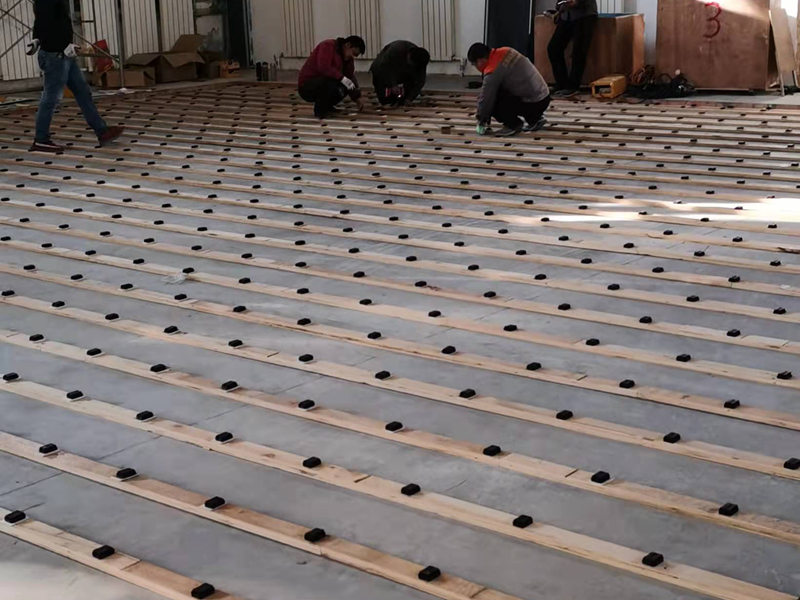
2025-05-08 15:49 Clicks:117
Hardwood sports flooring systems, particularly those crafted from maple, are renowned for their stability and performance in athletic environments. When properly maintained, these floors can offer decades of reliable service. Below is a comprehensive analysis of their performance stability, supported by industry standards and expert insights.

Hardwood floors provide excellent shock absorption, crucial for reducing impact on athletes' joints. The Maple Flooring Manufacturers Association (MFMA) recommends a minimum average shock absorption of 50%, equating to a force reduction of 22% for competitive sports . This feature helps in minimizing fatigue and potential injuries.
The ball rebound test measures how well a basketball bounces on the floor. A minimum of 93% rebound is standard for hardwood courts, ensuring consistent and predictable ball behavior during play .
Proper surface friction is vital for player safety and performance. The coefficient of friction should be between 0.4 and 0.6, as per ASTM F2772 standards, to prevent slipping while allowing controlled movement .
This measures the floor's ability to compress under impact. For hardwood floors, a maximum vertical deformation of 5 mm is acceptable, balancing comfort and stability for athletes .
Area deflection assesses how energy is dispersed across the floor. While specific values vary, high-quality hardwood systems are designed to provide uniform deflection, enhancing performance and safety .
Regular maintenance is essential to preserve the floor's performance:
Daily: Dust mop to remove debris.
Monthly: Deep clean with a pH-neutral wood cleaner.
Annually: Screen and recoat to maintain finish and traction .
With proper care, hardwood sports floors can last 40–50 years, with some systems exceeding 80 years. The ability to sand and refinish the surface multiple times contributes to their extended lifespan .
Wood is hygroscopic and can expand or contract with changes in humidity. Maintaining indoor relative humidity between 35% and 65% is crucial to prevent warping or gaps .
Excessive moisture can damage hardwood floors. It's important to promptly clean spills and maintain proper ventilation to protect the wood from moisture-related issues .
| Feature | Hardwood Flooring | Synthetic Flooring |
|---|---|---|
| Shock Absorption | High | Moderate |
| Ball Rebound | Excellent | Variable |
| Surface Friction | Adjustable via maintenance | Pre-set, less customizable |
| Vertical Deformation | Up to 5 mm | Typically less than 3.5 mm |
| Longevity | 40–50+ years | 10–20 years |
| Refurbishability | Sand and refinish multiple times | Limited to surface replacement |
| Environmental Impact | Renewable, biodegradable | Varies; often less sustainable |
Hardwood sports flooring systems, especially those made from maple, offer stable and superior performance when properly maintained. Their durability, coupled with the ability to refurbish, makes them a cost-effective long-term investment for athletic facilities. However, attention to environmental factors like humidity and moisture is essential to preserve their integrity and performance.
If you need further information on specific brands, installation guidelines, or maintenance schedules, feel free to ask!